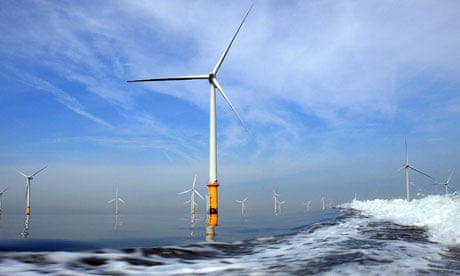It is the evidence proponents of offshore wind farms have been waiting for: a Dutch study has found that offshore wind turbines have "hardly any negative effects" on wildlife, and may even benefit animals living beneath the waves.
The researchers reached their conclusions after studying a wind farm near Windpark Egmond aan Zee, the first large-scale offshore wind farm built off the Dutch North Sea coast.
Anti-wind farm campaigners have often argued that wind farms can have a negative impact on bird populations, while some critics have voiced concerns that offshore wind farms could prove disruptive to marine life.
However, Professor Han Lindeboom from the Institute for Marine Resources and Ecosystem Studies at Wageningen University and Research centre, said that the new study revealed little evidence of negative effects on local wildlife.
"At most, a few bird species will avoid such a wind farm. It turns out that a wind farm also provides a new natural habitat for organisms living on the sea bed such as mussels, anemones and crabs, thereby contributing to increased biodiversity," he said.
"For fish and marine mammals, it provides an oasis of calm in a relatively busy coastal area."
The research, sponsored by NoordzeeWind, a joint venture of Nuon and Shell Wind Energy, claimed that offshore wind farms actually have a beneficial long-term effect on wildlife.
The wind farm functions as a new type of habitat, the report said, detailing how new species are attracted to the turbine foundations and surrounding rocks.
The researchers also noted that the turbines help to protect schools of cod, and that porpoises are heard more often inside than outside the wind farm.
Meanwhile, the survey concluded that sea bird species such as gannets tend to avoid the turbines, while seagulls appear unflustered and local cormorant numbers even increase.
"The number of birds that collided with the turbines was not determined but was estimated to be quite low on the basis of observations and model calculations," the researchers added in the article, published in online journal Environmental Research Letters.
The study noted that the effects of wind farms will inevitably vary depending on their position, but that offshore wind farms can contribute to a more diverse habitat and even help nature to recover from the effects of intensive fishing, pollution, oil and gas extraction, and shipping.
However, the report did recognise that the rotating blades can have a "disruptive impact" on some bird species, and recommends that wind farms are located in specific areas to minimise the possible impact.

Comments (…)
Sign in or create your Guardian account to join the discussion